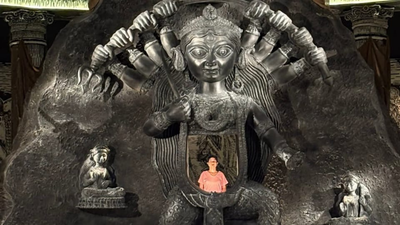ARTICLE AD BOX

History of burning and the resilience of women at this Durga Puja pandal
KOLKATA: An average of 200-300 acid attacks are reported annually in India, with approximately 95% of cases seeing the accused go unpunished, official govt statistics reveal. Between 2000 and 2016, over 2,500 individuals, primarily women, were killed by fire. Nationwide, 86 rapes are recorded every hour, while child marriage, human trafficking and domestic violence continue to persist across various regions and remote areas. Acts such as dousing brides with kerosene and setting them ablaze remain commonplace, underscoring the multifaceted oppression faced by women.Burning serves as a powerful metaphor for the physical and emotional torment inflicted upon women throughout history.
From mythological tales like that of Sita and Draupadi, where fire symbolised trials and humiliation, to modern-day acid attacks that scar not just faces but lives, the image of burning reflects a deeply entrenched patriarchal society.
Despite these adversities, the resilience and courage of women have continually emerged from the ashes. Symbolised by the goddess Mother Durga, these empowered women have redefined womanhood through collective defiance and strength.
Celebrating its 25th year, the Durga Puja organised by Dakshindari Youths this year centred its pavilion theme around 'burning'—a concept developed by artist Anirban Das representing both eternal suffering and a language of resistance. "Let the burning be erased. Let the fire awaken in the scars. Even storms bow when great trees fall. It takes a moment for the ashes to scatter. Your fire is greater than the sky," stated poet Srijato, encapsulating the essence of the event.Theme artist Anirban Das has created a platform at the puja pandal for the acid attack survivors to voice their protest. During the festival, such survivors will be joined by other women as they put up skits and other perfomances there.



.png)
.png)
.png)
















 1 hour ago
3
1 hour ago
3









 English (US) ·
English (US) ·